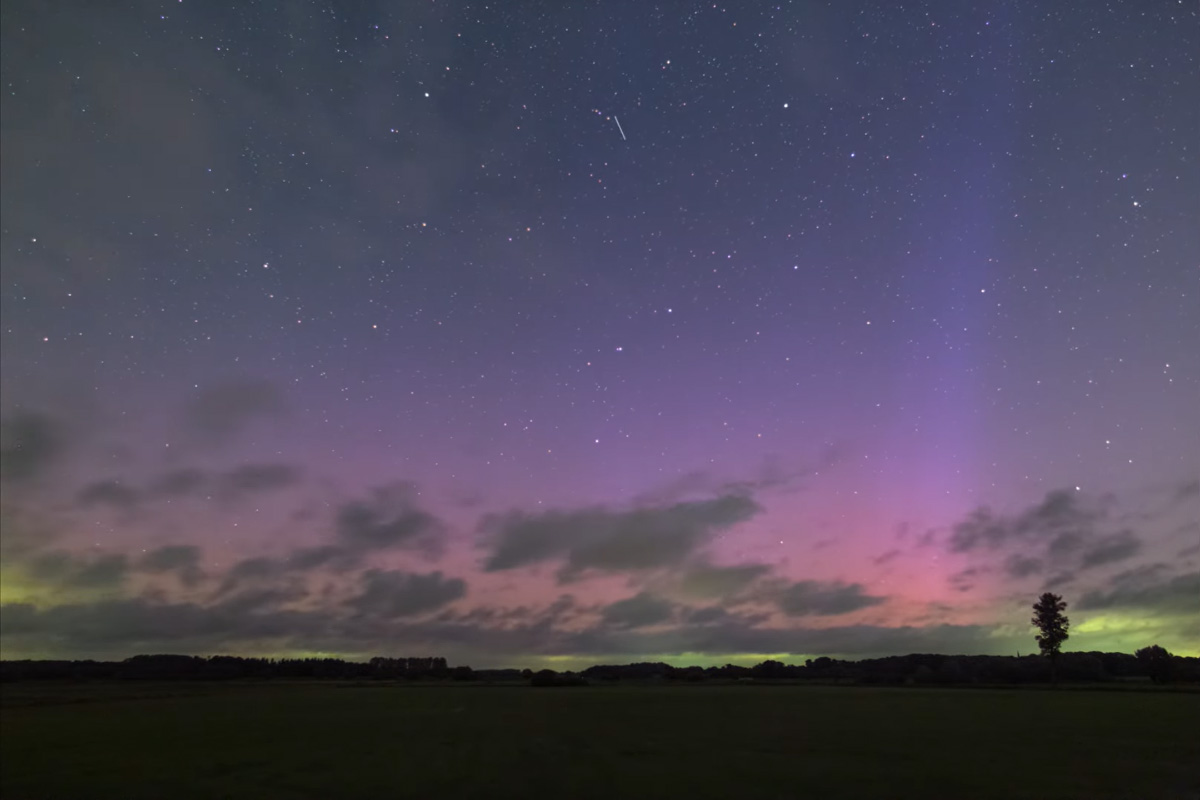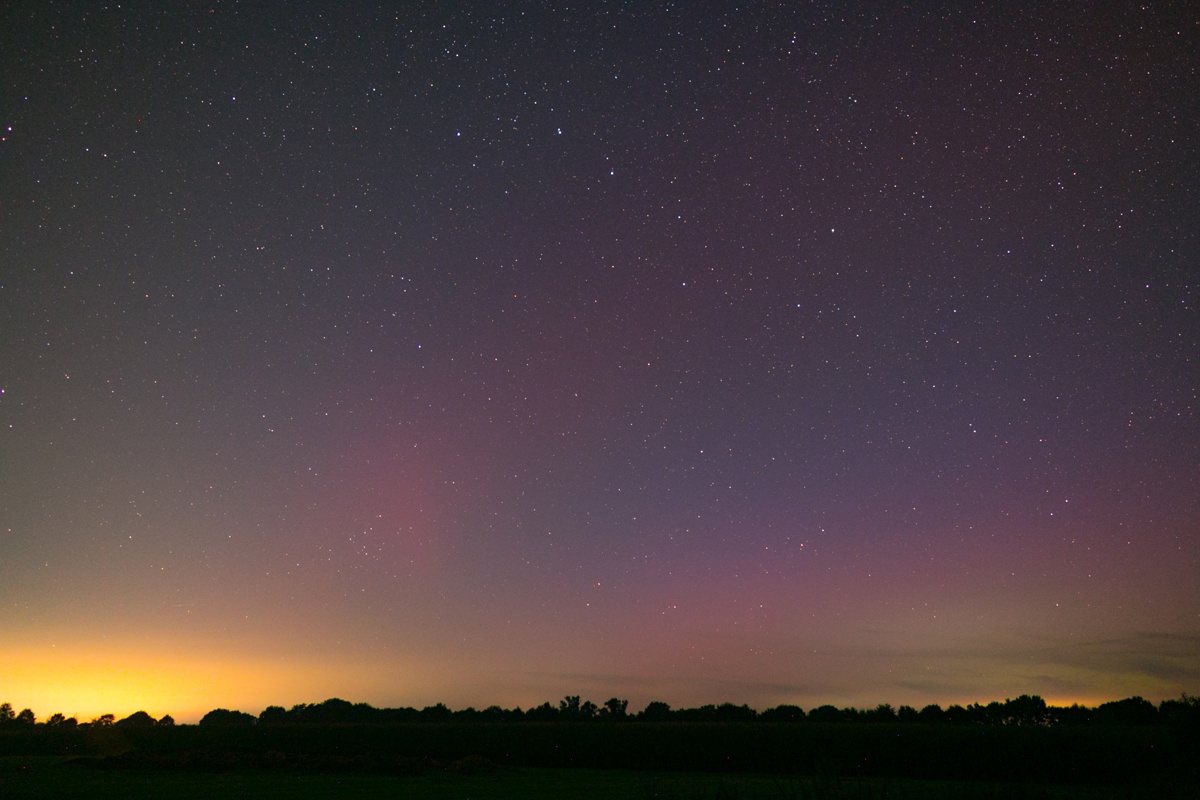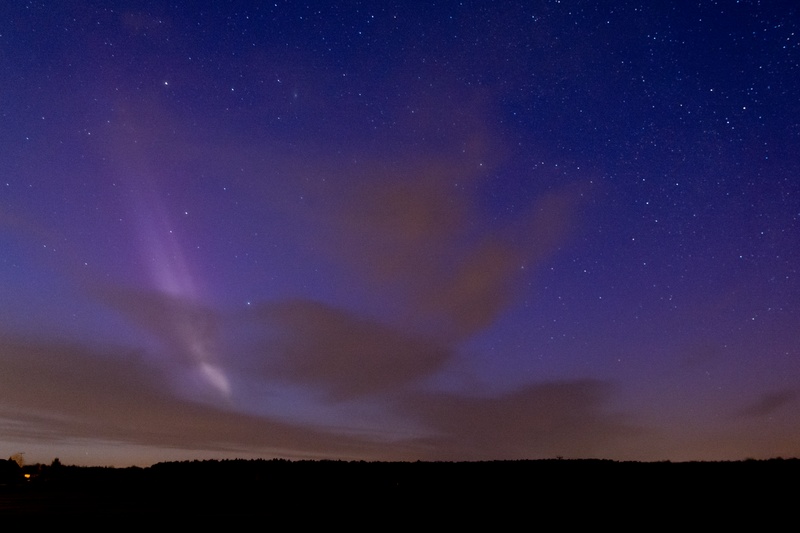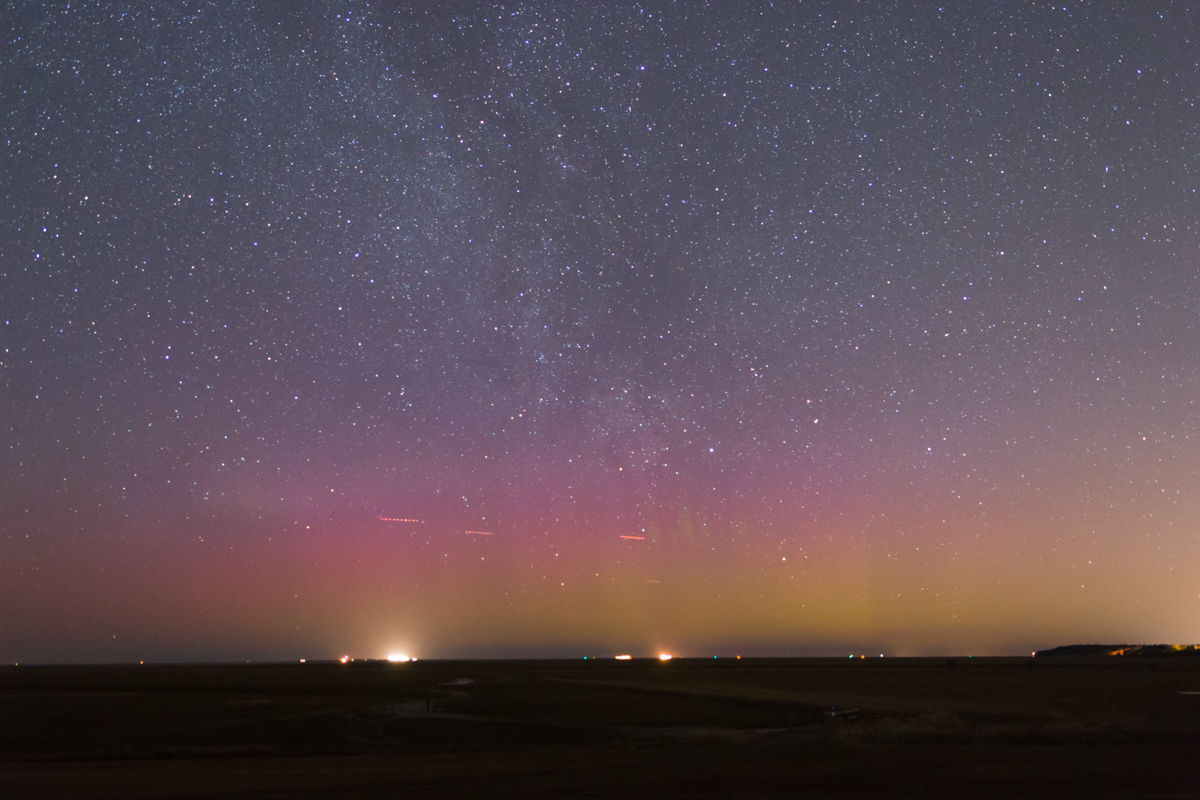Giant Blue Rays (GBR) are exceptionally high-reaching aurora beams. Normally, auroras occur at altitudes below 600 km. This is because, in the higher atmospheric layers, there are no longer enough air molecules to make the aurora visible. The Giant Blue Rays can reach a height of up to 3500 km. Their appearance is, as the name suggests, blue to violet. The color indicates the emission of nitrogen molecules, where light with a wavelength of 428 nm is produced.
So far, no cause for the phenomenon of GBRs has been found.
An analysis of GBRs from Germany was published by Michael Theusner in the AKM forum.
The SAR (Stable Auroral Red) aurora was only discovered in 1956. The reason for this is that this aurora is barely visible to the human eye. It is characterized by a weak red auroral arch that extends from the western horizon, across the entire sky to the eastern horizon and is relatively long-lasting. SAR aurora emits red light at a wavelength of 630 nm and occurs in the ionosphere at an altitude of about 400 km. Electrons are responsible for its formation.
The abbreviation STEVE stands for Strong Thermal Emission Velocity Enhancement. The luminous phenomenon occurs south of the auroral oval (Northern Hemisphere). It appears in the form of a narrow violet and green band in the sky. Typical for STEVE is the appearance of green aurora in the form of a "picket fence" below the band.
Strictly speaking, STEVE is not an aurora. It forms at an altitude of about 450 km in the ionosphere and is caused by an unusually fast and hot ion drift. Amateur scientists have observed that SAR arcs can transform into STEVE and back.
The first description of the STEVE phenomenon was published in 2018.
Evidence of STEVE in Germany (selection):
The RAGDA (Red Arc with Green Diffuse Aurora) phenomenon appears as standalone green spots that pulse in brightness. It is also characterized by deep red arcs that occur south (assuming the aurora occurs in the Northern Hemisphere) of the auroral oval.
The RAGDA aurora was first described in the following publication in 2022: "Nishimura et al. (2022). Interaction Between Proton Aurora and Stable Auroral Red Arcs Unveiled by Citizen"
Evidence of RAGDA in Germany (selection):











